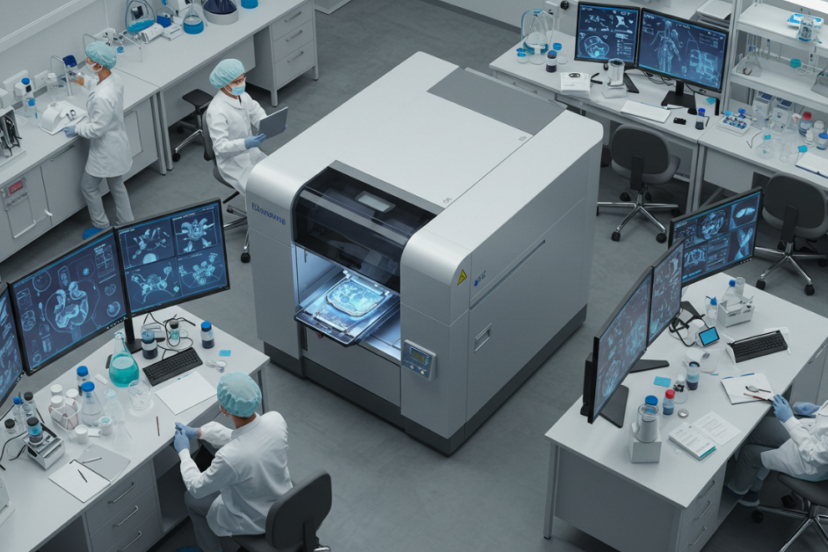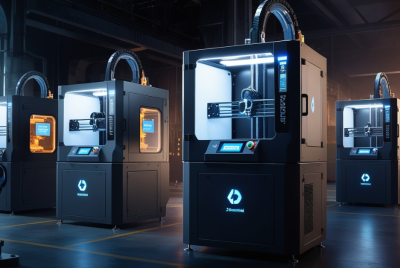The Ultimate Guide to Bioprinting Systems: Best Models for Researchers and Innovators
Imagine printing a human organ just like you’d print a document. Sounds like science fiction? Well, with bioprinting systems, that sci-fi future is already knocking at our door. Whether you’re a biomedical researcher, tech enthusiast, or just plain curious, bioprinting is one of the most exciting revolutions happening in science today. And if you’re wondering which machines are leading the charge—you’re in the right place.
What Are Bioprinting Systems?
Let’s break it down. Bioprinting systems are 3D printers—but instead of printing plastic or resin, they print living cells. These machines can layer cells into complex structures like tissues, vessels, and even mini organs. It’s like sculpting biology from the ground up.
How Do Bioprinting Systems Work?
Here’s the cool part. Bioprinters use something called bioink—a blend of living cells and biomaterials—to “print” in layers, mimicking the natural patterns of tissues found in the human body. With every pass of the printhead, cells are deposited in a precise pattern. Once printed, these structures are matured in an incubator, encouraging the cells to grow and fuse just like they would in your body.
Why Are Bioprinting Systems So Important?
They’re not just another tech fad. Bioprinting systems are solving real-world problems:
- Shortage of organ donors? Bioprinting to the rescue.
- Drug testing that doesn’t rely on animals? Bioprinted tissues offer a better, ethical alternative.
- Personalized medicine? These printers are laying the foundation for it.
Real-World Applications
You’d be amazed where bioprinting is already making an impact:
- Skin grafts for burn victims
- Liver tissues for drug testing
- Heart patches for cardiac repair
- Cartilage and bone for orthopedic procedures
- Cancer models for targeted therapy development
From labs to hospitals, the reach is expanding fast.
Key Components of Bioprinting Systems
A bioprinter isn’t your average desktop 3D printer. Here’s what sets it apart:
- Multiple printheads for printing different cell types or materials simultaneously
- Temperature control units to keep bioinks viable
- Sterile printing environments (some even integrate with biosafety cabinets)
- UV curing modules for crosslinking bioinks
- Touchscreen interfaces with slice software tailored for biology
Bioinks – The Living Ink
Think of bioinks as the lifeblood of the bioprinting process. These are hydrogels mixed with living cells. Common materials include:
- Alginate
- Gelatin Methacrylate (GelMA)
- Collagen
- Fibrin
- Decellularized ECM
These allow cells to stay alive, behave naturally, and eventually develop into functioning tissue.
Types of Bioprinting Techniques
There’s no one-size-fits-all approach. Different printing methods work better for different tasks:
1. Inkjet Bioprinting
Uses droplets to deposit bioinks. Great for high-speed, low-viscosity applications.
2. Extrusion Bioprinting
Think toothpaste being squeezed out. Ideal for printing thicker materials and larger tissues.
3. Laser-Assisted Bioprinting
Uses laser pulses to deposit cells with extreme precision—great for delicate, high-res structures.
Challenges in Bioprinting
Bioprinting isn’t all roses and printed organs. It still faces major hurdles:
- Keeping cells alive throughout the print process
- Achieving vascularization (building tiny blood vessels in printed tissues)
- Regulatory hurdles for clinical use
- High cost and maintenance of equipment
- Skill gap in operating complex systems
But the progress is steady—and hopeful.
Buying Guide: What to Look for in a Bioprinter
If you’re a researcher or lab buyer, here are a few must-checks:
- Resolution & precision: Especially for delicate tissue models.
- Multi-material support: More printheads = more complex structures.
- Ease of use: GUI-based interfaces are a huge plus.
- Cell viability rate: The higher, the better.
- Support & community: Especially important if you’re just starting out.
Top 10 Bioprinting Systems for Researchers and Innovators
Time to get to the juicy part—the best bioprinting systems in 2025 that researchers swear by:
1. CELLINK BIO X
- Why it rocks: Modular, highly customizable, touchscreen UI, sterilizable components
- Best for: Research labs and universities
- Bonus: Offers up to 3 printheads
2. Allevi 3 by 3D Systems
- Why it rocks: Compact, easy to use, great software
- Best for: Small labs and new research programs
- Bonus: Affordable compared to others
3. RegenHu 3DDiscovery™
- Why it rocks: Swiss precision, nanoliter resolution
- Best for: Advanced tissue engineering and pharma
- Bonus: Integrates with robotic automation
4. Aspect Biosystems RX1
- Why it rocks: Microfluidic tech ensures viable tissues
- Best for: Drug discovery and functional tissue testing
- Bonus: Excellent tissue maturation system
5. Organovo NovoGen MMX Bioprinter
- Why it rocks: First company to go public with bioprinting
- Best for: Human liver and kidney tissue development
- Bonus: Deep history in regenerative medicine
6. INKREDIBLE+ by CELLINK
- Why it rocks: Entry-level yet powerful, dual printheads
- Best for: Beginners and educational settings
- Bonus: Open-source bioink support
7. Poietis NGB Bioprinter
- Why it rocks: Laser-assisted, ultra-high precision
- Best for: Skin tissue engineering
- Bonus: Supports cell patterning and complex tissue layering
8. ROKIT Invivo
- Why it rocks: Hybrid printer for tissue and medical device printing
- Best for: Hospitals and regenerative medicine
- Bonus: Includes built-in incubation
9. Brinter One
- Why it rocks: Modular, scalable, compact
- Best for: Versatile multi-material bioprinting
- Bonus: Sleek desktop form factor
10. Revotek Bioscience Printer
- Why it rocks: Focused on vascular tissue engineering
- Best for: Cardiovascular and organoid research
- Bonus: Strong research support partnerships
What’s Next for Bioprinting?
We’re talking organ-on-demand, custom drug testing kits, and even space-based tissue development. NASA is already experimenting with bioprinters in zero gravity! The future is full of promise—and if you’re in research, now is the perfect time to get involved.
Conclusion
Bioprinting systems aren’t just printers—they’re gateways into the next era of medicine. Whether you’re just exploring or actively researching, understanding the technology and the top models gives you a serious edge. So go ahead—dive in, test the waters, and who knows? You might just print the next big breakthrough.
FAQs
- Are bioprinting systems available for public use?
Not really. Most are geared toward research institutions and require specialized training. - How expensive are bioprinters?
Prices range from $10,000 to over $300,000, depending on capabilities and features. - Can bioprinters create entire human organs yet?
Not yet—complex organs like hearts and kidneys are still in the experimental stage. - What is bioink made of?
Bioinks are typically hydrogels combined with living cells and nutrients. - Are there desktop-sized bioprinters?
Yes! Models like the Allevi 3 and CELLINK INKREDIBLE+ are compact enough for benchtop use.




